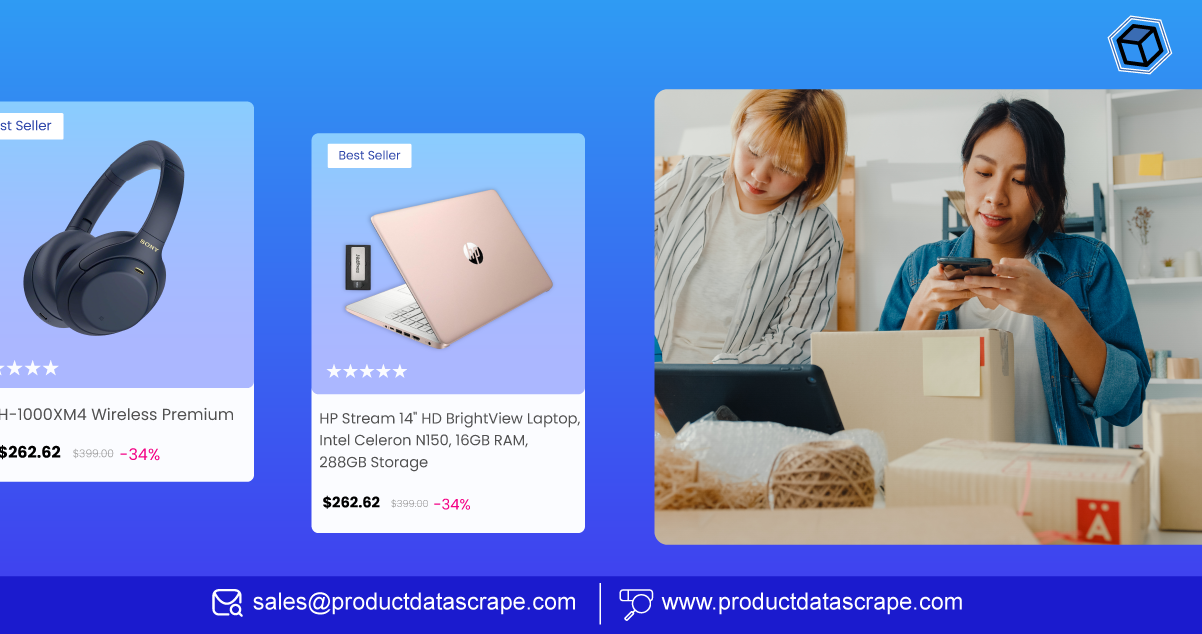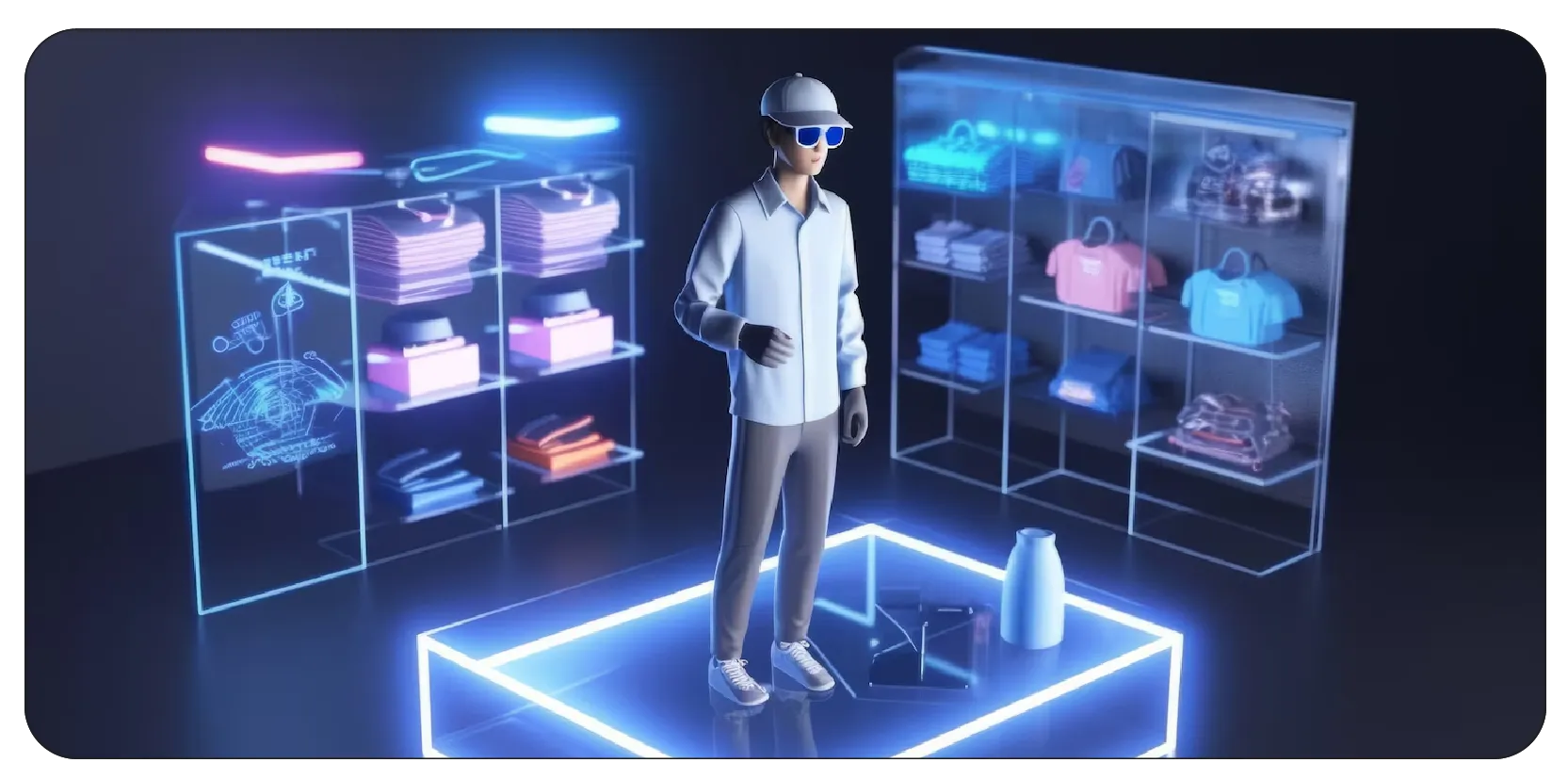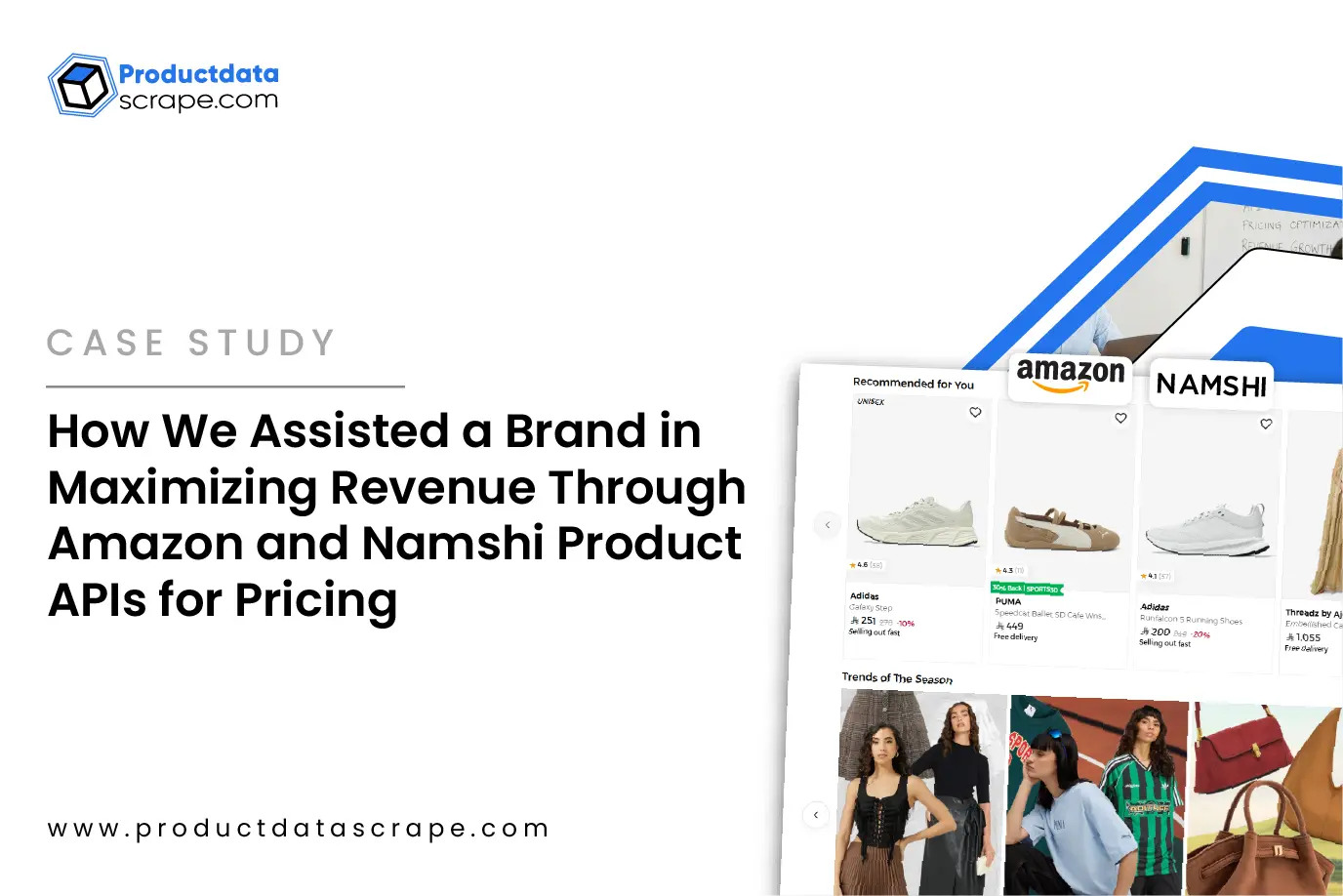
Introduction
In today’s hyper-competitive online retail world, businesses cannot afford to rely on
assumptions when making decisions. From price comparisons to customer reviews and trending
searches, every piece of data carries immense value. To compete effectively, retailers must
learn how to scrape products from e-commerce websites and turn raw data into actionable
insights.
Data extraction enables online sellers, researchers, and marketers to collect millions of
product listings, prices, and reviews automatically. Instead of wasting time on manual checks,
an e-commerce website scraper for product data helps you scale operations across multiple
categories and platforms. From tracking seasonal discounts to analyzing consumer behavior, data
scraping has become essential.
With the rise of e-commerce API scraping for product details, companies now have access to
structured, real-time datasets that fuel smarter pricing, targeted advertising, and optimized
inventory management. Whether it’s for Ecommerce product dataset
scraping, extracting reviews,
or monitoring competitor products, data-driven insights allow retailers to maintain an edge.
This blog explores the benefits of e-commerce data scraping through six problem-solving
sections, complete with stats and tables (2020–2025). We’ll also highlight why choosing Product
Data Scrape ensures reliable, scalable, and compliant solutions tailored for online businesses.
Market Trends – Why E-Commerce Data Matters
The global e-commerce market has grown at an exponential rate, driven by mobile adoption,
increased internet penetration, and changing consumer habits. In Southeast Asia, India, and
global markets alike, this digital acceleration has created both opportunities and challenges.
Businesses that learn to scrape products from e-commerce websites can uncover competitive
insights into product availability, regional pricing, and market trends. Without this
automation, staying ahead of millions of listings across platforms like Amazon, Shopee,
Flipkart, and Lazada would be impossible.
| Year |
Global E-Commerce Market ($ Trillion) |
YoY Growth (%) |
| 2020 |
4.2 |
18% |
| 2021 |
4.9 |
16% |
| 2022 |
5.5 |
12% |
| 2023 |
6.2 |
13% |
| 2024 |
7.0 |
13% |
| 2025 |
8.1 |
15% |
For instance, with Ecommerce product dataset scraping, brands can analyze how product categories
perform across different regions. Health & beauty, electronics, and apparel consistently rank as
top performers, but their growth rates vary widely.
Example: In 2022, health & beauty saw 18% YoY growth, while electronics grew at 12%. By
capturing these insights early, businesses can adapt product strategies to focus on
faster-growing sectors.
Using Web Scraping E-commerce Websites ensures that businesses don’t just react to trends—they
anticipate them. Retailers gain a comprehensive picture of demand patterns, competitor actions,
and consumer preferences across diverse markets.
Price Intelligence – Staying Competitive
Pricing remains one of the most critical aspects of e-commerce success. Consumers today actively
compare prices across multiple sellers before making purchases, and even a 2–3% price difference
can influence buying decisions.
That’s why businesses rely on a real-time e-commerce price dataset to monitor competitor pricing
and adapt strategies quickly. For instance, fashion brands can track seasonal discounting
trends, while electronics sellers can analyze how competitor prices shift during launches.
| Year |
Avg. Electronics Price ($) |
Avg. Fashion Price ($) |
Avg. Beauty Price ($) |
Avg. Baby Products Price ($) |
| 2020 |
120 |
45 |
30 |
28 |
| 2021 |
115 |
42 |
29 |
27 |
| 2022 |
110 |
40 |
28 |
26 |
| 2023 |
105 |
39 |
27 |
25 |
| 2024 |
100 |
38 |
26 |
24 |
| 2025 |
95 |
36 |
25 |
23 |
As the table shows, average prices across categories are trending downward due to intense
competition. Sellers who lack pricing intelligence risk losing market share.
By integrating Scrape Data from any Ecommerce Website, businesses can establish automated alerts
when competitor prices change, ensuring they remain competitive without constantly monitoring
manually. Retailers can even integrate pricing data with ad campaigns—ensuring promotions are
launched only when profitable.
Ultimately, using scraping for price intelligence creates a sustainable competitive edge,
balancing competitiveness with profitability.
Leverage real-time e-commerce price datasets to monitor competitors,
adjust strategies instantly, and stay profitable with Product Data
Scrape solutions!
Contact Us Today!
Consumer Insights – Reviews & Sentiment
Customer reviews are one of the most influential drivers of purchasing behavior. Over 80% of
online buyers consider reviews before completing a purchase. By analyzing review sentiment,
businesses can identify pain points, track consumer satisfaction, and spot market opportunities.
With tools for Custom eCommerce Dataset Scraping , businesses can build long-term review datasets
across categories like health, beauty, electronics, and baby products. By doing so, they
identify what customers love and where competitors fall short.
| Year |
Positive Sentiment (%) |
Neutral Sentiment (%) |
Negative Sentiment (%) |
| 2020 |
70 |
18 |
12 |
| 2021 |
72 |
17 |
11 |
| 2022 |
74 |
16 |
10 |
| 2023 |
76 |
15 |
9 |
| 2024 |
78 |
14 |
8 |
| 2025 |
80 |
13 |
7 |
Consider Extract Health & Beauty Product Data : review scraping might reveal consistent mentions
of “organic ingredients” in positive reviews, while negative reviews highlight “poor packaging.”
This helps businesses fine-tune product design and marketing.
Likewise, with Web Scraping Baby Products Websites, sellers can track concerns like safety
standards or product durability. Addressing these insights proactively reduces negative feedback
and boosts consumer trust.
Sentiment-driven strategies transform reviews into competitive intelligence, enabling smarter
product decisions and better brand positioning.
Search Data & Demand Forecasting
Demand forecasting is vital in e-commerce, where consumer preferences shift quickly. Traditional
forecasting methods often fall short because they rely on historical sales data. However, with
e-commerce API scraping for product details, businesses can track real-time search and listing
data to predict demand more accurately.
| Year |
Top Growth Category |
Growth Rate (%) |
| 2020 |
Electronics |
14 |
| 2021 |
Beauty & Personal |
16 |
| 2022 |
Fashion |
18 |
| 2023 |
Baby Products |
20 |
| 2024 |
Health & Wellness |
22 |
| 2025 |
Eco-Friendly Goods |
25 |
As seen above, consumer demand often shifts unpredictably. By Web-Scraping an E-Commerce Website
With Python, retailers can track keyword searches and trending products to forecast which
categories are about to boom.
Example: A sudden spike in “eco-friendly cleaning products” search volume could indicate a
broader sustainability trend. Sellers who adjust inventory and marketing early gain an edge.
Scraping search and listing data doesn’t just reveal what’s popular now—it predicts what’s next.
This proactive approach helps retailers optimize inventory, reduce stock-outs, and capture
emerging demand before competitors.
Category-Specific Scraping – Targeted Strategies
Different product categories require different scraping strategies. For instance, electronics
need frequent price monitoring, while fashion benefits more from trend tracking. Using
E-commerce Data Scraping tools, businesses can customize their approach per category.
- Electronics – Focus on competitor price tracking and stock monitoring.
- Fashion – Analyze search trends, seasonal demand, and influencer-driven
spikes.
- Health & Beauty – Leverage Extract Health & Beauty Product Data to
understand ingredient preferences and packaging reviews.
- Baby Products – Use Web Scraping Baby Products Websites to prioritize
safety concerns, certifications, and durability mentions.
| Category |
Key Metric to Scrape |
Business Benefit |
| Electronics |
Prices, stock levels |
Competitive positioning |
| Fashion |
Trends, keywords |
Improved ad targeting |
| Health & Beauty |
Reviews, ingredients |
Product quality improvements |
| Baby Products |
Safety mentions, reviews |
Trust-building & compliance |
By focusing scraping strategies on specific needs, businesses ensure they’re not overwhelmed
with irrelevant data but instead extract the insights that matter most.
For example, a cosmetics seller might notice rising searches for “vegan lipstick,” while a baby
products retailer could track concerns about “BPA-free bottles.” This kind of targeted
intelligence creates opportunities to innovate quickly and meet demand efficiently.
Unlock category-specific scraping strategies to track trends, monitor
reviews, and gain actionable insights with Product Data Scrape’s
tailored solutions.
Contact Us Today!
The Future of E-Commerce Data Scraping

The role of scraping in e-commerce is only going to expand. With AI, predictive analytics, and
automation, businesses that embrace scraping will outperform those relying on traditional
methods.
By 2025, experts project that 90% of large online retailers will integrate scraping into their
operations for pricing, trend analysis, and inventory management. Companies already using
scraping tools like Scrape Data from any Ecommerce Website are building competitive advantages
that compound over time.
Future applications will include:
- Dynamic Pricing Engines powered by real-time competitor monitoring.
- Predictive Demand Models using search data and review sentiment.
- Personalized Marketing Campaigns fueled by consumer behavior insights.
- Automated Inventory Management reducing waste and maximizing sales.
Product Data Scrape-style tools that combine automation with customization will drive the next
wave of retail innovation. Those leveraging scrape products from e-commerce websites today are
already preparing for the highly data-driven future of online retail.
Why Choose Product Data Scrape?
At Product Data Scrape, we understand the importance of accurate, real-time, and scalable
e-commerce data extraction. Our solutions go beyond basic scraping—we offer tailored Custom
eCommerce Dataset Scraping that provides businesses with structured, actionable insights.
Whether you’re a retailer tracking prices, a brand analyzing reviews, or a research firm
building long-term datasets, our services adapt to your requirements. With our expertise in
e-commerce API scraping for product details, we ensure you gain reliable data while staying
compliant with best practices.
From extracting competitor listings to delivering curated datasets, our goal is to empower
businesses to make smarter decisions. By leveraging Web Scraping E-commerce Websites, we help
you predict demand, refine pricing, and optimize your overall strategy.
Partnering with Product Data Scrape means gaining a trusted ally in your data journey—enabling
growth, innovation, and long-term success.
Conclusion
E-commerce is no longer just about selling—it’s about selling smarter. As markets grow more
competitive, businesses must adopt advanced tools to stay ahead. Learning how to scrape products
from e-commerce websites gives retailers the power to track competitors, predict demand, and
analyze consumer sentiment at scale.
From real-time e-commerce price dataset monitoring to extracting niche insights like Web
Scraping Baby Products Websites, the possibilities are endless. With structured datasets,
businesses can move from reactive strategies to proactive growth—anticipating consumer needs and
outperforming competitors.
At Product Data Scrape, we deliver tailored scraping solutions that help businesses transform
raw data into valuable intelligence. Whether you need product datasets, competitor monitoring,
or category-specific scraping, we provide reliable, scalable, and future-ready solutions.
Ready to extract smarter insights and lead in the e-commerce race? Contact Product Data Scrape
today and unlock the full potential of data-driven growth.
















.webp)




.webp)
.webp)
